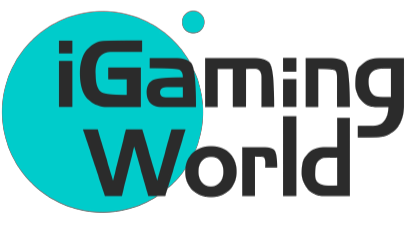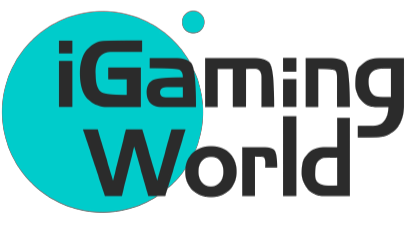Revenue fell year-on-year for Penn Entertainment in Q2, although revenue for ESPN Bet surpassed expectations and the loss from the interactive segment fell below analyst estimates.
Penn Entertainment group revenue in the three months to 30 June was down 0.7% to $1.66bn. Gaming revenue – including interactive – was 3% higher but food, beverage, hotel and other revenue slipped 13.4%, hitting the overall figure.
Looking at performance by region, Penn reported modest year-on-year growth from its Midwest, Northeast and West segments. This was wiped out by declines in the South, plus lower revenue from Interactive.
“Our retail properties delivered solid results this quarter as our best-in-class team of operators continues to execute across our diverse portfolio of market leading assets,” CEO Jay Snowden said.
“In our Interactive segment, top-of-funnel growth, improved risk and trading execution and refined promotional strategies contributed to better-than-expected revenue and adjusted EBITDA results.”
How did ESPN Bet perform?
Interactive revenue for the quarter fell 9.7% to $232.6m, which Snowden credited to the risk and trading improvements. ESPN Bet’s performance has been under particular scrutiny, leading to speculation investors could push for a sale.
A joint bid by Boyd Gaming and FanDuel to acquire Penn and split out the land-based and interactive businesses is mooted. While this means industry attention will be trained on the operator’s earnings call today, Snowden talked up ESPN Bet’s prospects.
ESPN Bet’s upcoming launch in New York, due to take place later this month, will be a key milestone he said. This will expand its reach to 46% of the US population, with 10 million monthly active users engaging with ESPN’s media brands in the state.
ESPN Bet, but better
“In parallel, our partners at ESPN are expanding our unique ESPN Bet media integrations, including those with ESPN’s leading fantasy football product which boasts over 12 million active users,” Snowden added. TheScore, its other flagship media property, will integrate ESPN Bet directly into its media app, including ‘add to betslip’ functionality to further extend its reach.
Penn’s investor presentation also looked to highlight an improving product proposition. Hold across Indiana, Iowa, Massachusetts, Maryland, Michigan and Pennsylvania averaged 8.5% in Q2, placing it third behind ‘Competitor A’ and ‘Competitor B’ (DraftKings and FanDuel) and above the rest of the market’s 7.5% average.
A refreshed user interface and experience, coupled with new features such as early win payouts and a referral programme further strengthen the offering, Penn says.
Player numbers are also growing strongly. Average monthly active users for sports betting more than doubled year-on-year to 465,000 in Q2, while Penn’s digital database has grown 81% since ESPN Bet’s launch.
ESPN Bet EBITDA loss beats analyst expectations
The adjusted EBITDA loss from Penn Interactive came to $102.8m, below Deutsche Bank expectations of $129m. This unexpectedly narrow loss ultimately meant Penn beat analyst expectations for adjusted EBITDAR expectations of $367m during the quarter, compared to a consensus of between $342m and $345m.
Snowden: Penn land-based performance “stable” in Q2
For the land-based business, revenue from Penn properties amounted to $1.40bn during Q2. Snowden called this a “stable” performance, aided by a continued focus on database growth and driving engagement. This spurred market share growth in Ohio, Maryland and Iowa during the quarter.
“We benefit from continued investment in our gaming and non-gaming offerings and local and national partnerships related to our food and beverage offerings,” Snowden said. In particular renovated rooms and the rollout of the first ESPN Bet sportsbook in Michigan’s Hollywood Casino at Greektown resulted in a 6.5% uptick in GGR at the property.
Similar investment in Ohio, for refreshed casino floors, sportsbooks and new food and beverage options across Penn’s four properties led to a 5.1% increase in GGR from the state.
“We are also making solid progress on our four development projects, all of which remain on budget and on schedule,” Snowden added. It is relocating two Hollywood Casino riverboat casinos to dry land in Illinois, as well as building a new hotel at Hollywood Casino Columbus in Ohio and adding a second tower to Nevada’s M Resort.
Revenue by region:
- Northwest – $696.3m – up 1.1%
- South – $298.2m – down 3.3%
- Midwest – $298.1m – up 1.6%
- West – $135.3m – up 4.1%
Counting the cost of expansion at Penn Entertainment
Accompanying near-flat revenue in Q2 was an increase in operating expenses, which climbed 8.2% to $1.59bn, driven by a 22.3% rise in gaming costs. This left $74.5m in operating profit, down 63.8%.
Net non-operating costs amounted to $104.8m, meaning pre-tax loss hit $30.3m, compared to last year’s $112.8m profit. Penn received $3.2m in tax benefit and discounted $300,000 in net loss attributable to non-controlling interests.
In addition, adjusted EBITDAR slipped 23% year-on-year to $367m, although this still beat analyst expectations. It ended Q2 with a net loss of $26.8m, in contrast to a $78.4m net profit in 2023.
H1 net loss reaches $141.5m
Looking at the first six months of the year, revenue for the period hit $3.27bn, down 2.3% year-on-year. Gaming revenue slipped 1.0% to $2.59bn – including a $440.3m interactive contribution, down 10.3% – while food, beverage, hotel and other revenue fell 7.0% to $679.3m.
Operating expenses were 9.3% higher at $3.22bn, again driven by a rise in gaming costs. This resulted in a $53.1m operating profit, down 86.9%. Adjusted EBITDAR fell 34.7% to $623.2m.
Non-operating costs topped $210.9m, meaning pre-tax loss was $157.8m, in stark contrast to last year’s $795.1m profit. Penn received $15.8m in tax benefit and discounted $500,000 in losses from non-controlling interests. This left the operator with a net loss for H1 of $141.5m, compared to a $592.5m profit in 2023.
Shares in Penn Entertainment are up 2.61% in pre-market trading at $17.71 per share.



